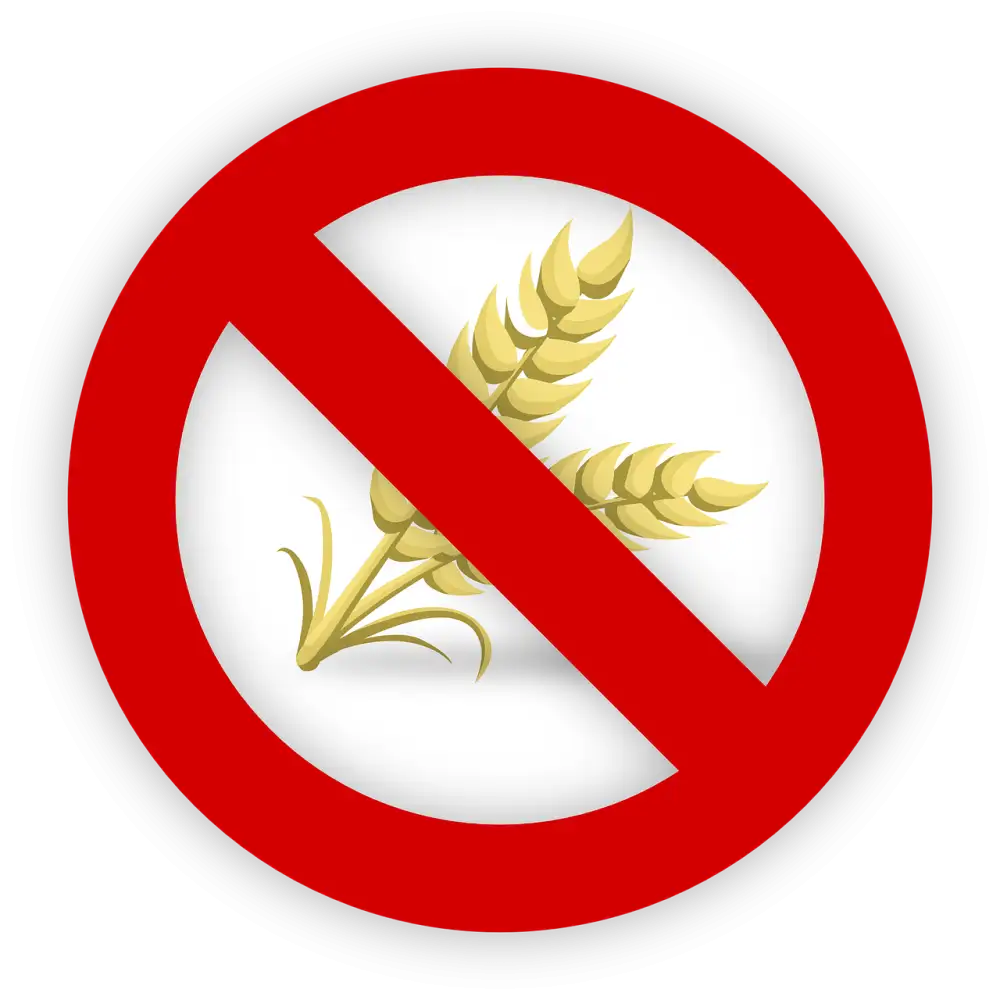Discover the Benefits of Gluten-Free Flour: A Healthier Alternative for Your Culinary Delights

- Understanding Gluten and its Effects on Health
- What is Gluten-Free Flour?
- Benefits of Using Gluten-Free Flour
- Types of Gluten-Free Flours Available
- How to Use Gluten-Free Flour in Baking and Cooking
- Tips for Substituting Gluten-Free Flour in Recipes
- Potential Challenges and Solutions when Using Gluten-Free Flour
- Gluten-Free Flour Recipes for a Healthy Lifestyle
In recent years, there has been a growing interest in gluten-free diets and the use of gluten-free flour as a healthier alternative in cooking and baking. Gluten, a protein found in wheat, barley, and rye, can cause digestive issues for some individuals. As a result, many people are seeking out gluten-free options to accommodate their dietary needs.
Gluten-free flour is made from grains or starches that do not contain gluten. It provides a great alternative for those who have celiac disease or gluten sensitivity. Not only does it offer health benefits, but it also allows individuals to enjoy their favorite dishes without sacrificing taste or texture.
In this article, we will explore the benefits of using gluten-free flour in your culinary delights. We will also provide tips on how to incorporate it into your recipes seamlessly. So let's dive into the world of gluten-free flour and discover its potential for creating delicious and healthy meals.
Understanding Gluten and its Effects on Health
Gluten is a protein found in wheat, barley, and rye. For individuals with celiac disease or gluten sensitivity, consuming gluten can lead to various health issues. Celiac disease is an autoimmune disorder where the ingestion of gluten triggers an immune response that damages the lining of the small intestine. This can result in nutrient deficiencies, digestive problems, fatigue, and even long-term complications.
Even for those without celiac disease or gluten sensitivity, there is growing evidence that suggests reducing gluten intake can have health benefits. Some studies indicate that a gluten-free diet may help alleviate symptoms of irritable bowel syndrome (IBS) and improve overall gut health. Additionally, eliminating or reducing gluten from one's diet has been associated with increased energy levels and improved mental clarity.
Understanding the effects of gluten on health is crucial in making informed choices about our dietary habits. By exploring alternatives like gluten-free flour, we can embrace a healthier lifestyle while still enjoying delicious culinary delights.
What is Gluten-Free Flour?
Gluten-free flour is a type of flour that does not contain gluten, a protein found in wheat, barley, and rye. It is specifically designed for individuals with gluten sensitivity or celiac disease, who need to avoid gluten in their diet. Gluten-free flour is made from alternative grains and starches such as rice, corn, tapioca, potato, and sorghum. It provides a suitable substitute for traditional wheat flour in baking and cooking, allowing individuals to enjoy their favorite dishes without the negative effects of gluten.
Benefits of Using Gluten-Free Flour
Using gluten-free flour in your culinary creations comes with a multitude of benefits. Firstly, it is an excellent option for those with gluten sensitivities or celiac disease, as it allows them to enjoy delicious foods without the discomfort or health risks associated with gluten consumption. Additionally, gluten-free flour is often higher in nutrients and fiber compared to traditional wheat flour, making it a healthier choice for everyone. It can also provide a lighter texture and enhance the flavors of your dishes. With gluten-free flour, you can create delectable treats that are both tasty and beneficial for your well-being.
Types of Gluten-Free Flours Available
There are several types of gluten-free flours available, each with its own unique properties and flavor profiles. Some popular options include almond flour, coconut flour, rice flour, oat flour, and chickpea flour. Almond flour is made from finely ground almonds and adds a nutty taste to baked goods. Coconut flour is derived from dried coconut meat and lends a subtle sweetness to recipes. Rice flour is made from finely milled rice grains and has a mild flavor that works well in both sweet and savory dishes. Oat flour is made by grinding oats into a fine powder and adds a hearty texture to baked goods. Chickpea flour, also known as gram or garbanzo bean flour, has a slightly nutty flavor and is often used in Mediterranean cuisine. These gluten-free flours offer a wide range of options for those looking to experiment with different flavors and textures in their culinary creations.
How to Use Gluten-Free Flour in Baking and Cooking
When using gluten-free flour in baking and cooking, it's important to understand that it behaves differently than traditional wheat flour. Here are some tips on how to use gluten-free flour effectively:
1. Measure accurately: Gluten-free flours can vary in density, so it's crucial to measure them accurately. Use a kitchen scale for precise measurements.
2. Blend flours: To achieve a better texture and taste, blend different types of gluten-free flours together. Common blends include rice flour, tapioca starch, and potato starch.
3. Add binders: Gluten is responsible for giving baked goods their structure. To compensate for this, add binders like xanthan gum or guar gum to your recipes. These help mimic the elasticity that gluten provides.
4. Increase leavening agents: Gluten-free flours tend to be denser, so you may need to increase the amount of leavening agents like baking powder or yeast in your recipes.
5. Adjust liquids: Gluten-free flours absorb moisture differently than wheat flour. You may need to adjust the amount of liquid in your recipe by adding more or less depending on the consistency of the batter or dough.
6. Mix well: It's essential to mix gluten-free batters and doughs thoroughly to ensure even distribution of ingredients and prevent any lumps.
By following these tips, you can successfully incorporate gluten-free flour into your baking and cooking repertoire, creating delicious dishes that cater to various dietary needs without compromising on taste or texture.
Tips for Substituting Gluten-Free Flour in Recipes
When substituting gluten-free flour in recipes, it's important to keep a few tips in mind. Firstly, it's crucial to use a blend of gluten-free flours to mimic the texture and taste of traditional wheat flour. This can include a combination of rice flour, tapioca flour, and potato starch. Secondly, adding xanthan gum or guar gum can help improve the elasticity and binding properties of gluten-free flours. Lastly, be mindful of the liquid content in your recipe as gluten-free flours tend to absorb more liquid than regular flour. Adjustments may be needed to achieve the desired consistency. With these tips, you can confidently experiment with gluten-free flours in your favorite recipes!
Potential Challenges and Solutions when Using Gluten-Free Flour
When using gluten-free flour, there can be some challenges that arise. One common issue is that gluten-free flours tend to be denser and have a different texture than traditional wheat flour. This can affect the overall consistency and structure of baked goods.
Another challenge is that gluten-free flours often lack the elasticity that gluten provides. This can make it difficult to achieve the same level of rise and chewiness in breads and pastries.
However, there are solutions to these challenges. Adding xanthan gum or guar gum to gluten-free flour can help improve the texture and binding properties. Additionally, incorporating ingredients such as eggs, yogurt, or applesauce can add moisture and enhance the overall taste and texture of baked goods.
It's also important to note that different types of gluten-free flours have varying properties. Experimenting with different combinations of flours, such as rice flour, almond flour, or tapioca flour, can help achieve better results in your recipes.
By understanding these potential challenges and implementing the right solutions, you can confidently embrace the versatility of gluten-free flour in your culinary creations.
Gluten-Free Flour Recipes for a Healthy Lifestyle
1. Quinoa Pancakes: Replace regular flour with quinoa flour to make fluffy and nutritious pancakes. Top them with fresh fruits and honey for a delicious breakfast.
2. Chickpea Flatbread: Use chickpea flour to create a gluten-free flatbread that is high in protein and fiber. Enjoy it as a wrap or serve it alongside your favorite dips.
3. Almond Flour Chocolate Chip Cookies: Indulge in guilt-free treats by swapping all-purpose flour with almond flour in your chocolate chip cookie recipe. These cookies are not only gluten-free but also rich in healthy fats.
4. Buckwheat Banana Bread: Make a moist and flavorful banana bread using buckwheat flour instead of wheat flour. It adds a nutty taste and is packed with essential nutrients.
5. Cauliflower Pizza Crust: For a low-carb alternative, try making pizza crust using cauliflower rice mixed with gluten-free flour. Load it up with your favorite toppings for a satisfying meal.
6. Coconut Flour Blueberry Muffins: Create light and fluffy muffins by incorporating coconut flour into the batter along with juicy blueberries. These muffins are perfect for breakfast or as an afternoon snack.
By incorporating these gluten-free flour recipes into your diet, you can enjoy delicious meals while maintaining a healthy lifestyle without compromising on taste or texture.
In conclusion, gluten-free flour is not just a trendy alternative for those with celiac disease or gluten intolerance. It is a versatile and healthy option that can be enjoyed by anyone looking to improve their overall well-being. By understanding the effects of gluten on health and exploring the benefits of using gluten-free flour, we can open up a world of culinary delights without compromising taste or texture.
Whether you are baking a batch of cookies, whipping up pancakes for breakfast, or creating a savory dish for dinner, there is a wide variety of gluten-free flours available to suit your needs. From almond flour to rice flour to chickpea flour, each type offers its own unique flavor profile and nutritional benefits.
While substituting gluten-free flour in recipes may require some experimentation and adjustment, the potential challenges can be overcome with practice and knowledge. By following tips for successful substitution and exploring tried-and-true recipes specifically designed for gluten-free flour, you can create delicious meals that everyone will enjoy.
So why not embrace the versatility of gluten-free flour? Not only does it provide a healthier alternative, but it also allows us to explore new flavors and expand our culinary horizons. With its growing popularity and availability in stores worldwide, now is the perfect time to incorporate gluten-free flour into your cooking repertoire and embark on a journey towards better health and gastronomic delight.
Published: 11. 12. 2023
Category: Health



